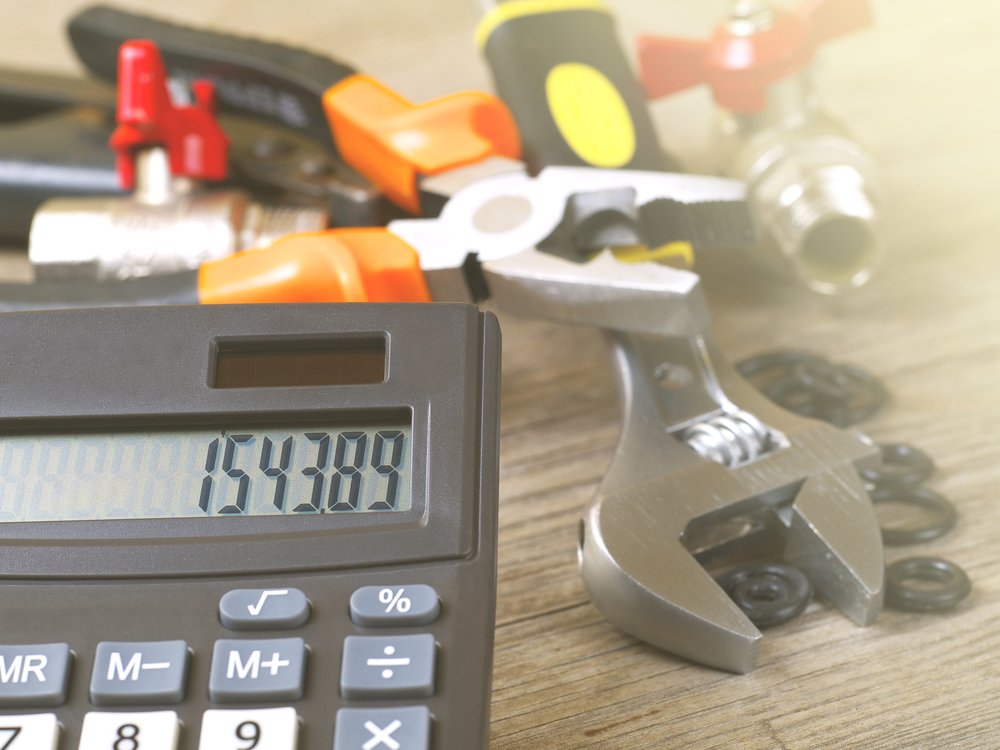How to Estimate a Plumbing Job In Construction Project?
The estimation of a plumbing project is essential for plumbers and customers. Knowing how much a job will cost in advance helps prevent unpleasant surprises and ensures that all sides are on the same agreement. The process requires consideration of several factors, including the cost of materials, labor and the time needed for the project. This article is a comprehensive guide for estimating plumbing tasks effectively with strategies for calculating accurately and avoiding common mistakes.
Factors to Consider When Estimating a Plumbing Job
1. Material Costs
The supplies required to complete a plumbing project differ based on the size and nature of the project. For instance, a domestic repair project may only require fittings, pipes, and some extra items, whereas the larger commercial job may require a large list of materials.
- Common Materials Pipes (PVC copper, PVC, or PEX) and fittings, valves and fixtures.
- Price Variation: The price of the materials may vary according to the quality and the kind. Copper, for example, is generally higher priced than PVC but it could be needed in accordance with the local construction codes.
2. Labor Costs
Labor is usually the most important element in any plumbing estimating. Based on the difficulty of the task the amount of work required could range between a few hours and several days.
- Hourly rate: The standard hourly cost for plumbers differs according to location but could range between $50-$150 per hour. Be sure to factor in the time required to travel and the time spent on site.
- Experience Niveau: Plumbers who are more experienced might charge more, but typically can complete work quicker due to their experience.
3. Job Complexity
Certain plumbing tasks are straightforward, such as repairing the leaky faucet or unblocking drains, but others require many effort like installing a brand new water line or fixing an issue with the sewer.
- Small jobs: These can be minor repairs or installation and typically require fewer materials and require less time.
- Complex jobs The more complex tasks like complete pipe replacements, re-routing of plumbing systems or dealing with major structural problems often require more work and special equipment.
4. Time and Scheduling
The time factor is a crucial aspect when estimating the cost of plumbing work. Certain tasks can be completed within a few hours, whereas other jobs could take days or weeks.
- Regular and. emergency plumbing work usually has higher prices because of the urgency of the job. However regular maintenance or repairs could be scheduled more efficiently by reducing the time and expense.
- Working hours jobs that require work after hours or work on weekends usually require more charges.
5. Permits and Inspections
Certain plumbing projects may need permits, inspections or permit approvals specifically when they require significant modifications in the system of plumbing. The costs must be included in the estimate.
- Permit Fees: Based on the local laws, permits might be required for major construction or repairs. Costs for these permits can vary significantly depending on the location.
- Inspections: Upon completion of the project the inspector might need be able to sign off the project to assure the work is compliant with the local building code, which can add more time and expense to the work.
Step-by-Step Guide to Estimating a Plumbing Job
Step 1: Assess the Job
First, you must to thoroughly reviewing the location. This involves knowing the nature of the work, identifying any potential trouble areas and determining the area to make precise estimations. This helps to avoid unexpected expenses and makes sure that the estimation is accurate.
- Ask Questions What is the client’s most pressing issue? Are there any possible obstacles (e.g. problems with access, or old pipes)?
- Take Care: Accurate measurements of the pipe and area can help determine the quantity of material and the associated costs.
Step 2: Divide the job into tasks
After completing the assessment After the assessment is completed, you can break the task into tasks. For instance the pipe installation could consist of measuring, cutting fitting and sealing. This helps not only with time estimation, but will also allow for better accuracy of cost of materials and labor.
Step 3: Calculate Material Costs
Utilizing the measurements from the evaluation, determine the amount of material needed. For instance, if a pipe installation needs 50 feet of pipe and you know the length, calculate how much of pipe are required as well as fittings and other components.
Step 4: Estimate Labor Hours
Once you have identified the duties, estimate how long each one will take. This is where the experience can be helpful, since more complicated jobs could cause unexpected problems. Calculate your hourly wage to determine the total cost of labor.
- Example: If an activity requires 8 hours, when your rate for hourly work is $75 then the cost of labor for that task will be $600.
Step 5: Factor in Additional Costs
Other expenses, such as permits, travel fees and inspection fees, have to be taken into consideration at this time. It is crucial to inform the client about any potential extra costs in order to avoid conflicts later.
Step 6: ready a Written Estimate
Once all calculations have been completed, you can prepare an estimate that you can write for your client. Include:
- A comprehensive breakdown of the costs for labor, materials, and more expenses.
- Estimated time required to complete the task.
- All possible contingencies, for example, more expenses if unexpected issues occur.
Common Mistakes to Avoid
1. Underestimating Labor Time
The most frequent errors is to underestimate the time required to finish a task. Make sure to account for possible delays or unexpected complications that could occur.
2. Not Factoring in Permit Costs
Not recognizing the necessity of permits could lead to extra charges that weren’t included in the initial estimate. Always review local regulations to determine the requirements for permits to do the work.
3. Overlooking Hidden Issues
Unnoticed problems, such as older or damaged pipes could quickly turn a basic repair project into something more expensive. Make sure you thoroughly examine the area prior to estimating the cost to ensure that you don’t miss any potential problems.
Comparison of Small vs. large plumbing jobs
| Criteria | Small Plumbing Jobs | Large Plumbing Jobs |
| Materials | Fewer, cheaper materials | Higher quantity, more expensive |
| Labor | 1-hour | Days or nights that last for a long time |
| Permit and Inspection | Rarely needed | Often required |
| Complexity | Low | High |
| Total Cost | $100-$500 | $1,000 and up |
Conclusion
Estimating the cost of plumbing work requires careful attention to detail, knowing the material and labor costs, as well as an ability to predict possible problems. When you thoroughly assess the project and breaking it down into smaller tasks and taking into consideration all possible costs–including inspections and permits–you are able to add an accurate and precise estimate to your customers. This increases trust and ensures that the work goes smoothly from start to completion.






